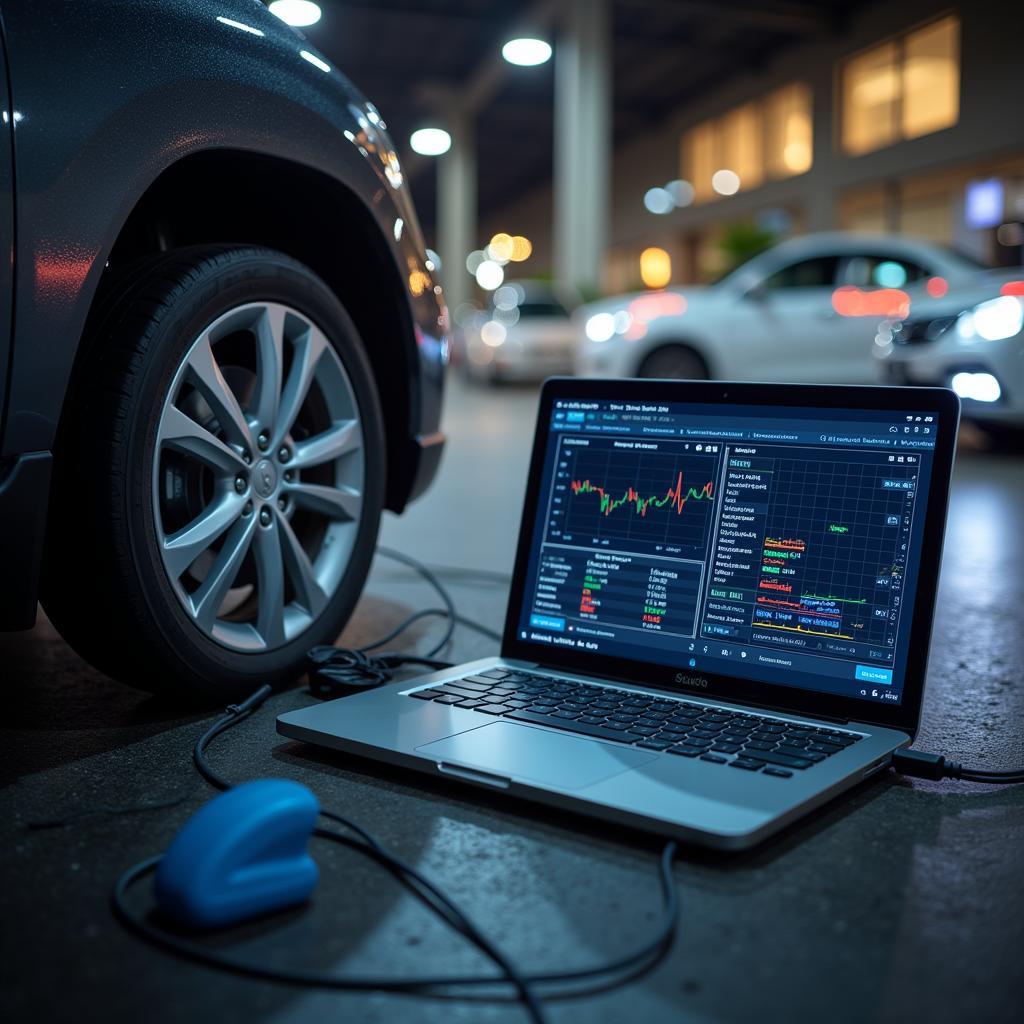Car battery going flat in cold weather is a common problem that can leave you stranded. The frigid temperatures can significantly impact your car’s battery performance, making it harder to start your vehicle. This article will delve into the reasons why cold weather drains your car battery, offer effective solutions, and provide preventative measures to avoid future issues.
Why Does My Car Battery Go Flat in Cold Weather?
Cold temperatures affect your car battery in several key ways. First, the chemical reactions within the battery slow down, reducing its ability to produce power. This reduced power directly impacts its cranking amps, which are essential for starting your engine. Secondly, the engine oil thickens in cold weather, making it harder for the engine to turn over, requiring more power from the battery. Finally, your car’s electrical systems, like heated seats and defrosters, demand more power in winter, further straining the battery.
Understanding the Science Behind Cold and Car Batteries
The chemical process inside a lead-acid battery relies on the movement of ions. In cold weather, these ions move slower, decreasing the battery’s ability to deliver the required current. This reduced current is particularly problematic when starting your engine, as it demands a high current surge. Think of it like molasses flowing slower in the cold – the battery’s power struggles to flow efficiently.
 Car Battery Diagram in Cold Weather
Car Battery Diagram in Cold Weather
Troubleshooting a Flat Car Battery in Cold Weather
If you find yourself with a flat battery on a cold morning, there are a few things you can try. First, try jump-starting your car using jumper cables and another vehicle or a portable jump starter. Ensure you follow the correct procedure to avoid damaging either vehicle’s electrical system. If jump-starting isn’t an option, consider using a battery charger to recharge your battery.
Jump-Starting Your Car Safely and Effectively
Jump-starting can be a quick solution, but it’s important to do it correctly. Connect the red positive (+) cable to the positive terminal of the dead battery, then to the positive terminal of the good battery. Connect the black negative (-) cable to the negative terminal of the good battery and then to a clean, unpainted metal surface on the car with the dead battery. Start the good car and let it run for a few minutes, then try starting the car with the dead battery.
Using a Battery Charger
A battery charger can be a valuable tool for maintaining your battery’s health, especially during winter. Connect the charger to the battery terminals, ensuring the positive and negative clamps are correctly attached. Follow the manufacturer’s instructions for charging times and settings.
Preventing a Flat Car Battery in Cold Weather
Prevention is always better than cure. There are several steps you can take to prevent your car battery from going flat in cold weather. Regularly testing your battery’s voltage can help you identify potential issues before they become major problems. Keeping your battery terminals clean and free of corrosion is also crucial for optimal performance.
Regular Battery Maintenance: The Key to a Healthy Battery
Just like any other part of your car, your battery requires regular maintenance. Cleaning the battery terminals with a wire brush and baking soda solution can remove corrosion and improve conductivity. You should also have your battery tested regularly, particularly before the onset of winter.
“Regular battery testing is crucial, especially in colder climates,” says automotive electrical expert, David Miller, “It allows you to identify weaknesses and prevent unexpected breakdowns.”
Other Preventative Measures
Parking your car in a garage or covered area can help protect the battery from extreme temperatures. Limiting the use of power-hungry accessories like heated seats and the radio can also conserve battery power. Investing in a battery warmer can be particularly helpful in extremely cold climates.
“Consider a battery warmer for extra protection in severe cold,” adds Miller, “It’s a worthwhile investment for maintaining battery health and reliable starts.”
Conclusion
Car battery going flat in cold weather is a frustrating, yet preventable problem. By understanding the impact of cold on your battery and implementing the preventive measures outlined in this article, you can ensure reliable starts and avoid being stranded. Regular maintenance, including cleaning terminals and testing voltage, is essential for prolonging your battery’s life and ensuring its optimal performance throughout the winter months.
FAQ
- How often should I test my car battery? Ideally, you should test your battery every few months, especially before winter.
- Can I leave my car battery charger connected overnight? Consult your charger’s manual, as some chargers are designed for trickle charging, while others are not.
- What is the average lifespan of a car battery? Car batteries typically last between three and five years.
- How can I tell if my car battery is going bad? Signs of a failing battery include slow cranking, dim headlights, and clicking sounds when you turn the key.
- Is it safe to jump-start a car in freezing temperatures? Yes, it is generally safe, but ensure you follow the correct procedure.
- What type of battery is best for cold weather? AGM (Absorbent Glass Mat) batteries are known for their good cold-cranking amps and durability in cold weather.
- Will a battery warmer damage my car battery? No, a properly installed battery warmer is designed to safely warm the battery without causing damage.


